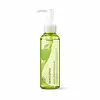What's inside
What's inside
 Key Ingredients
Key Ingredients

No key ingredients
 Benefits
Benefits

 Concerns
Concerns

 Ingredients Side-by-side
Ingredients Side-by-side

Water
Skin ConditioningCetearyl Alcohol
EmollientBehentrimonium Chloride
PreservativeCocamidopropyl Hydroxysultaine
CleansingGlycerin
HumectantPanthenol
Skin ConditioningBromelain
Skin ConditioningPapain
Skin ConditioningAnanas Sativus Fruit Juice
Skin ConditioningHydrolyzed Pea Protein
EmollientHydrolyzed Pea Protein Pg-Propyl Silanetriol
Skin ConditioningButyrospermum Parkii Butter
Skin ConditioningRice Amino Acids
Skin ConditioningKeratin Amino Acids
Skin ConditioningBambusa Vulgaris Leaf/Stem Extract
HumectantZinc Picolinate
SoothingMaltodextrin
AbsorbentAlcohol
AntimicrobialIsopropyl Alcohol
SolventButyloctanol
HumectantSilicone Quaternium-16
Skin ConditioningUndeceth-11
EmollientUndeceth-5
EmulsifyingSodium Metabisulfite
AntioxidantPhenoxyethanol
PreservativeEthylhexylglycerin
Skin ConditioningChlorphenesin
AntimicrobialSorbic Acid
PreservativeBenzoic Acid
MaskingSodium Benzoate
MaskingLeuconostoc/Radish Root Ferment Filtrate
AntimicrobialIodopropynyl Butylcarbamate
PreservativeCitric Acid
BufferingParfum
MaskingBenzyl Benzoate
AntimicrobialCoumarin
PerfumingAlpha-Isomethyl Ionone
PerfumingWater, Cetearyl Alcohol, Behentrimonium Chloride, Cocamidopropyl Hydroxysultaine, Glycerin, Panthenol, Bromelain, Papain, Ananas Sativus Fruit Juice, Hydrolyzed Pea Protein, Hydrolyzed Pea Protein Pg-Propyl Silanetriol, Butyrospermum Parkii Butter, Rice Amino Acids, Keratin Amino Acids, Bambusa Vulgaris Leaf/Stem Extract, Zinc Picolinate, Maltodextrin, Alcohol, Isopropyl Alcohol, Butyloctanol, Silicone Quaternium-16, Undeceth-11, Undeceth-5, Sodium Metabisulfite, Phenoxyethanol, Ethylhexylglycerin, Chlorphenesin, Sorbic Acid, Benzoic Acid, Sodium Benzoate, Leuconostoc/Radish Root Ferment Filtrate, Iodopropynyl Butylcarbamate, Citric Acid, Parfum, Benzyl Benzoate, Coumarin, Alpha-Isomethyl Ionone
Cetyl Ethylhexanoate
EmollientIsopropyl Palmitate
EmollientTriethylhexanoin
MaskingCaprylic/Capric Triglyceride
MaskingPolyglyceryl-6 Dicaprate
EmulsifyingCocos Nucifera Oil
MaskingPolyglyceryl-10 Diisostearate
EmulsifyingDiisostearyl Malate
EmollientPolyglyceryl-6 Caprylate
EmulsifyingParfum
MaskingWater
Skin ConditioningCoco-Caprylate/Caprate
EmollientPyrus Malus Seed Oil
EmollientPyrus Malus Fruit Extract
Skin ConditioningButylene Glycol
Humectant1,2-Hexanediol
Skin ConditioningCetyl Ethylhexanoate, Isopropyl Palmitate, Triethylhexanoin, Caprylic/Capric Triglyceride, Polyglyceryl-6 Dicaprate, Cocos Nucifera Oil, Polyglyceryl-10 Diisostearate, Diisostearyl Malate, Polyglyceryl-6 Caprylate, Parfum, Water, Coco-Caprylate/Caprate, Pyrus Malus Seed Oil, Pyrus Malus Fruit Extract, Butylene Glycol, 1,2-Hexanediol
Ingredients Explained
These ingredients are found in both products.
Ingredients higher up in an ingredient list are typically present in a larger amount.
Parfum is a catch-all term for an ingredient or more that is used to give a scent to products.
Also called "fragrance", this ingredient can be a blend of hundreds of chemicals or plant oils. This means every product with "fragrance" or "parfum" in the ingredients list is a different mixture.
For instance, Habanolide is a proprietary trade name for a specific aroma chemical. When used as a fragrance ingredient in cosmetics, most aroma chemicals fall under the broad labeling category of “FRAGRANCE” or “PARFUM” according to EU and US regulations.
The term 'parfum' or 'fragrance' is not regulated in many countries. In many cases, it is up to the brand to define this term.
For instance, many brands choose to label themselves as "fragrance-free" because they are not using synthetic fragrances. However, their products may still contain ingredients such as essential oils that are considered a fragrance by INCI standards.
One example is Calendula flower extract. Calendula is an essential oil that still imparts a scent or 'fragrance'.
Depending on the blend, the ingredients in the mixture can cause allergies and sensitivities on the skin. Some ingredients that are known EU allergens include linalool and citronellol.
Parfum can also be used to mask or cover an unpleasant scent.
The bottom line is: not all fragrances/parfum/ingredients are created equally. If you are worried about fragrances, we recommend taking a closer look at an ingredient. And of course, we always recommend speaking with a professional.
Learn more about ParfumWater. It's the most common cosmetic ingredient of all. You'll usually see it at the top of ingredient lists, meaning that it makes up the largest part of the product.
So why is it so popular? Water most often acts as a solvent - this means that it helps dissolve other ingredients into the formulation.
You'll also recognize water as that liquid we all need to stay alive. If you see this, drink a glass of water. Stay hydrated!
Learn more about Water